Xiaomi 13 Ultra Review: What Can It Not Do?
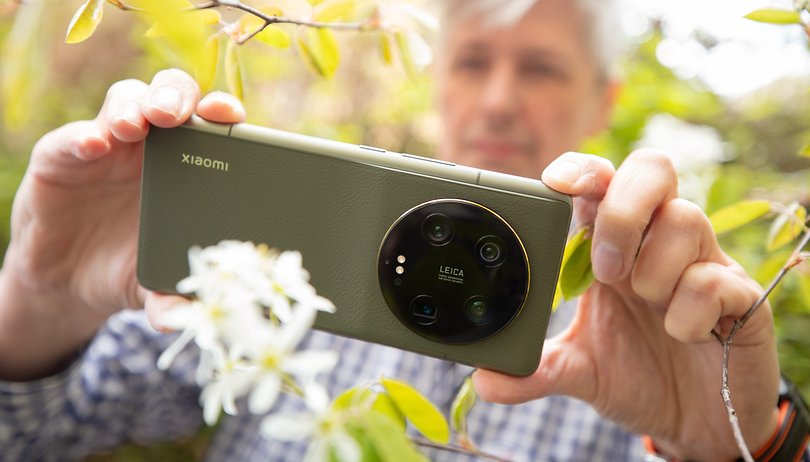

The Xiaomi 13 Ultra, the ultimate flagship camera smartphone that was developed in collaboration with Leica of Germany, has now officially launched in Europe for €1,499 a pop. Do bear in mind that this device is not available officially in the US, so those who want one will have to take the risk of a grey import. What can we expect from such an expensive Android smartphone? Let's find out together in our detailed review.
Good
- Impressive and versatile camera
- Refined yet daring design
- Exceptional performance with Snapdragon 8 Gen 2
- USB 3.2 connectivity
Bad
- Bloatware in MIUI 14
- Very expensive
- No eSIM Support
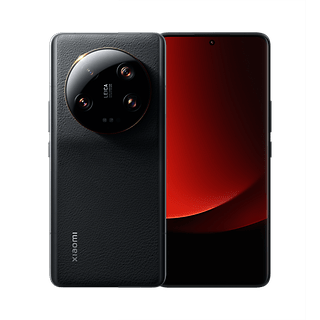
The Xiaomi 13 Ultra in a nutshell
In summary, the Xiaomi 13 Ultra is an all-around excellent smartphone that has not compromised on its choice of built-in technology. There is an excellent 6.73-inch LTPO AMOLED display with a resolution of 3,200 x 1,440 pixels. You will also get to call upon the Snapdragon 8 Gen 2 SoC mated to what is currently the most powerful camera system from Xiaomi.
We were already impressed by this when we imported it from China, and that has not changed at all with the EU model. The photos totally impressed us regardless of the situation. The Xiaomi 13 Ultra currently offers the best and most coordinated overall solution in the market in terms of the camera.
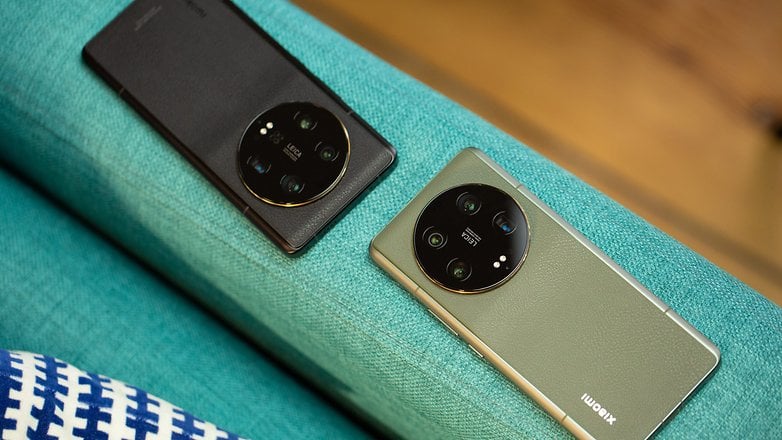
The asking price for the 12 GB RAM and 512 GB internal storage model is €1,499. This is far from the value-for-money proposition that Xiaomi is famous for. In comparison, the 16 GB RAM and 512 GB internal storage model costs 6,400 yuan in China, which is approximately €850 after conversion.
Yes, the downside is the price, which is still costly considering there is a Xiaomi logo on the device. It is a bitter pill to swallow when you consider how the device is sold for almost half the price in its home country. However, the company extended its update policy for the global model to five years of security updates and three major Android updates.
Those who are keen on the camera smartphone should not speculate on price drops happening shortly after its release. In all likelihood, there will only be a fairly limited number of units, just like what happened with the Xiaomi 11 Ultra (review). Do take note that there are very limited quantities of the Xiaomi 13 Ultra in Europe at the moment.

Xiaomi 13 Ultra design and build quality
TheXiaomi 13 Ultra follows the design of the Xiaomi 12S Ultra with the stylized giant lens on the back, but it looks much more grown-up at the same time. The extreme design is and remains a matter of taste. Clearly positive: Despite the huge camera element on top, holding it in the hand is still an ergonomic experience
What I liked:
- Striking and bold design.
- High-quality materials and great workmanship.
- Waterproof and dust resistance (IP68 rating).
What I disliked:
- No headphone jack.
- No microSD slot.
- Heavy and unwieldy.
The Xiaomi 13 Ultra takes after its Chinese-exclusive predecessor 12S Ultra in terms of design. You might not even call the huge, circular element—which stretches over half the back and reminds us of a large lens—a camera bump. It seems to pay homage to a time when you actually still had to lug around lenses this size. Today, there are four cameras stuffed within the black glass element, which we will take a closer look at later.
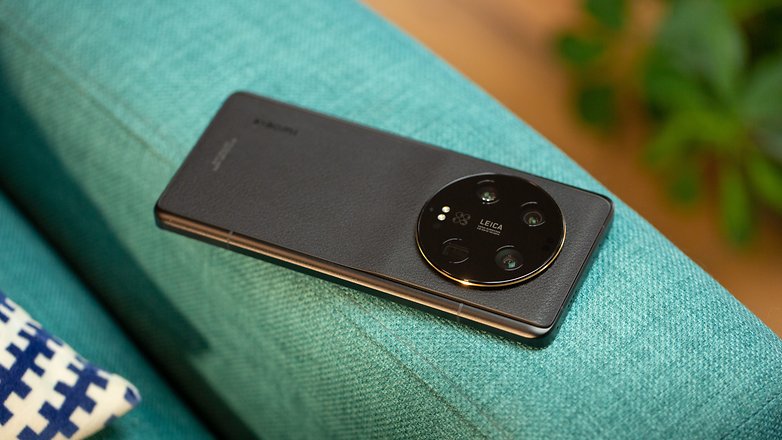
The rest of the back around the camera element is made of Xiaomi's second-generation vegan leather. The grippy material is even supposed to have an antibacterial effect thanks to nano-coating, and it also feels quite high-quality.The smartphone frame has become wider than the Xiaomi 12S Ultra. In addition, the entire camera element has been positioned a bit lower than before, which means that the Xiaomi 13 Ultra is no longer as top-heavy in the hand as the predecessor.
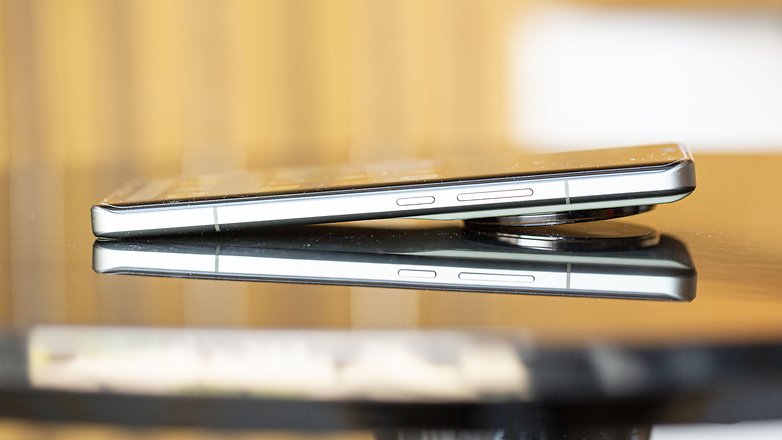
There's no question about it—the 227 grams heft is going to strain your pocket throughout the day. Should Xiaomi also make available the camera kit on store shelves, then carrying this handset in the front pants pocket is definitely going to be a huge problem. You should be aware of that when buying the Xiaomi 13 Ultra.
What else is there? This smartphone is IP68 certified. Gorilla Glass Victus is used in front. There is no longer any available headphone jack, and the dual-SIM slot is really only for SIM cards. With 512 GB of UFS 4.0 storage, you should not miss having a microSD card for storage purposes anyway.
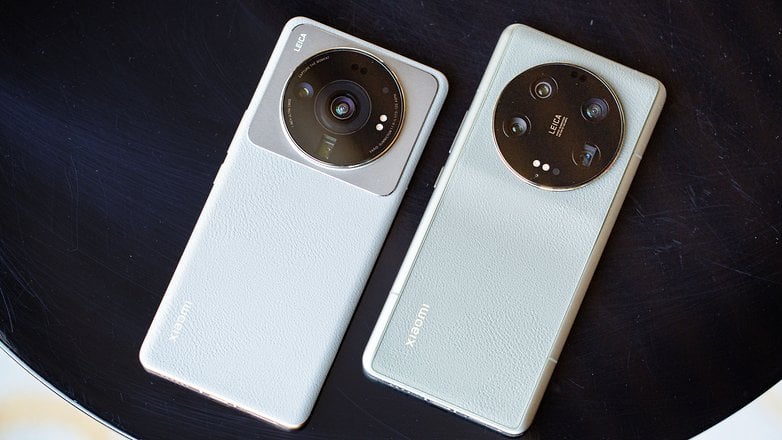
Xiaomi 13 Ultra display
The Xiaomi 13 Ultra has a display on the same level as any other flagship phone. The panel is extremely fast and extremely bright—and it is pure fun with the balanced display. Only the rounded edges on the left and right of the screen are a matter of preference, but you can't please everyone in the first place anyway.
What I liked:
- Spectacular LTPO display with a variable 1 to 120 Hz refresh rate.
- Extremely bright with a maximum brightness of 2,600 nits (typical: up to 1,300 Hz).
What I disliked:
- The curved display is a personal preference.
The 6.73-inch OLED panel offers a resolution of 1,440 x 3,200 pixels and looks simply stunning. It boots up with some animation that is buttery smooth thanks to the 120 Hz refresh rate panel. The battery also benefits from LTPO 2.0 technology, which dynamically reduces the display refresh rate down to 1 Hz at times it deems appropriate to save power. Thanks to the 1,920 Hz PWM dimming, the display should always be flicker-free. Speaking of frequencies: The display's sensitivity is capable of hitting 240 Hz.
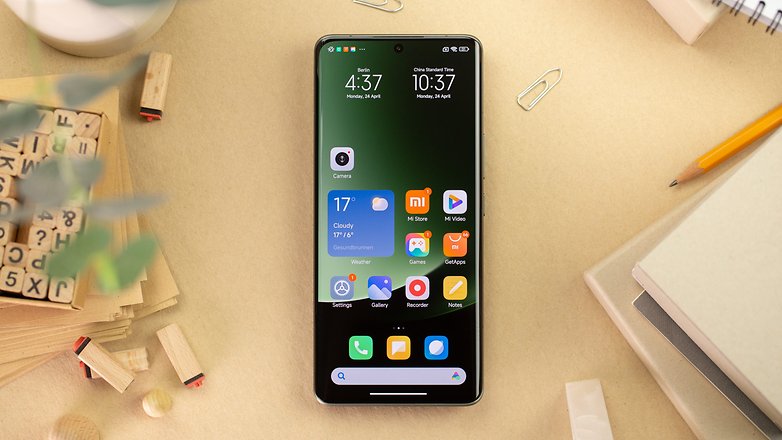
The color reproduction is also successful and convinces with intense, but not disturbingly gaudy colors. The consistency over different ambient light conditions is also pleasing to view here. From a dark room to the blazing sun, the panel is always legible, thanks to a maximum brightness of 1,300 nits. Under direct sunlight, even 2,600 nits are possible.
In the settings, you will find numerous options to adjust the display to your liking, ranging from upscaling video content to the color style and color space used. While this is actually not even worth mentioning, but for the sake of completeness, we should also mention the Always-on Display on offer that provides the Xiaomi 13 Ultra with many themes. We can also confirm the presence of this feature in the global model.
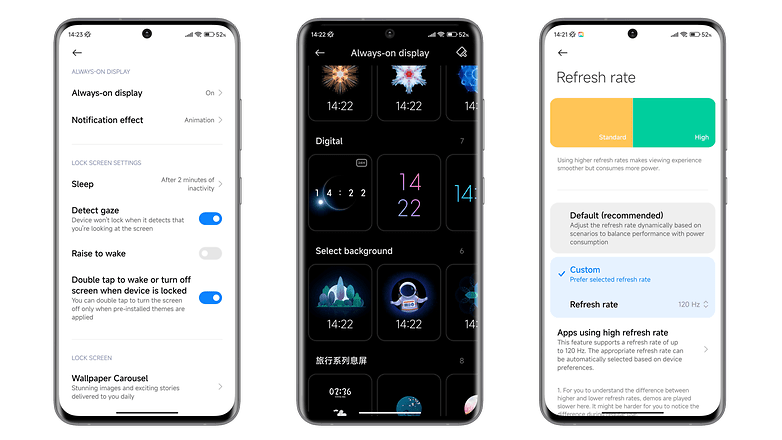
Xiaomi 13 Ultra software
The Xiaomi 13 Ultra runs MIUI 14—that is, Android 13. The update to Android 14 will probably still be named MIUI 14, and chances are it will be available this fall. This is one point that can probably be deemed as the only weakness of the Xiaomi 13 Ultra: The software is simply not quite perfect.
What I liked:
- Better update policy.
- Many useful assistants.
- Free themes are cool.
What I disliked:
- Plenty of bloatware.
- €1,499 asking price.
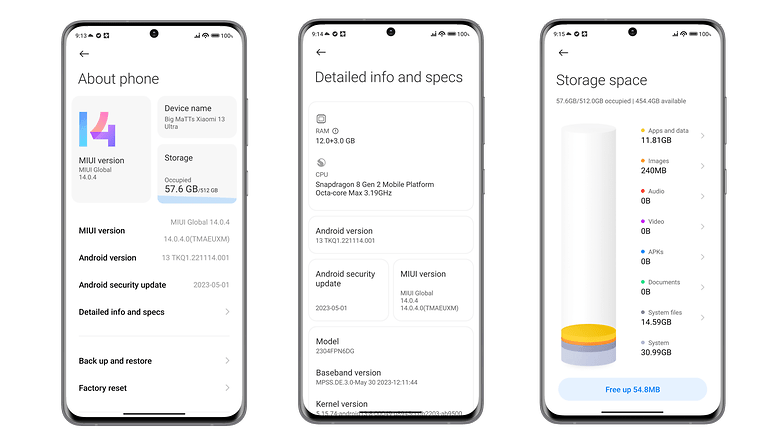
We already reported in detail about MIUI 14 in conjunction with our Xiaomi 13 Pro review and Xiaomi 13 review. You can also find our first impressions of MIUI 14 on NextPit. Therefore, I would like to keep the software part really short here and refer you to the previously linked articles for the feature set and countless screenshots.
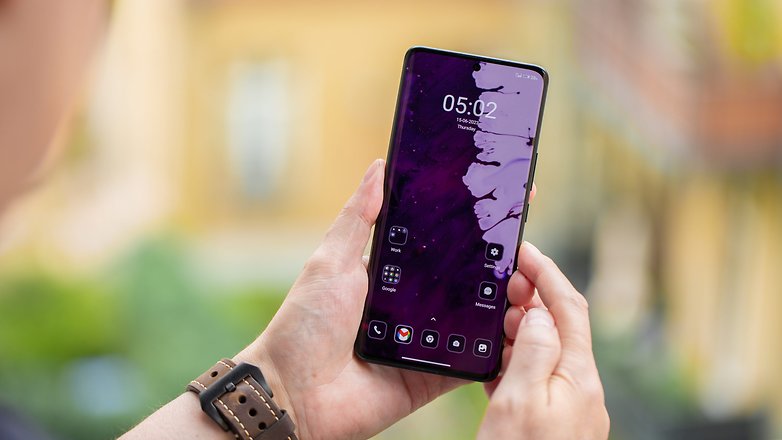
The biggest difference to its China-only model might be the preinstalled Google services including the Google Play Store and the lack of notifications in traditional Chinese characters despite the English language selection. However, do not be fooled that Xiaomi would have forgotten about its range of bloatware that graced this €1,500 Android smartphone.
I counted 90 apps, whereby my review and game apps—six in number—would have to be omitted from that count. Still, in my eyes, this is an outrage of the highest degree. Lei Jun doesn't even need to show up at my place next week!
On the other hand, the fact that Xiaomi has improved its update policy for the Xiaomi 13 Ultra (presumably due to pressure from its competitors) in favor of three new Android versions and a whopping five years of Google's security updates is very positive news. Only Samsung offers more with four years of Android updates.
Our Xiaomi 13 Ultra was relatively up-to-date at the time of the detailed review of the global model, carrying the latest May security update.
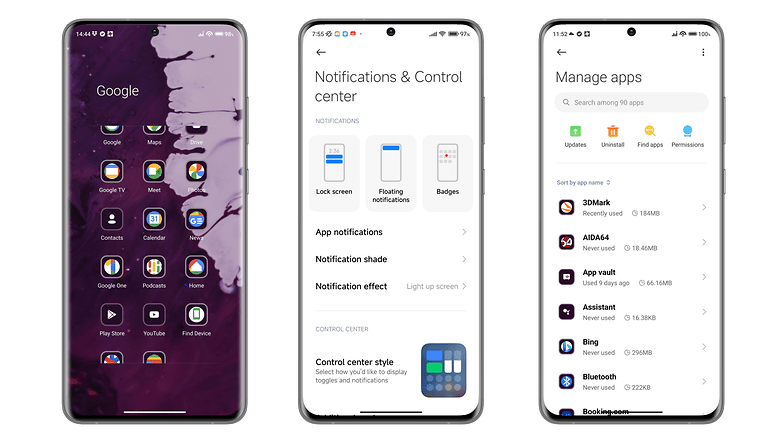
Otherwise, MIUI 14 is basically fun to use. The interface is colorful and offers numerous options for customization. There are small but nice features that make life easier everywhere; such as the ability to extract text from photos. Sure, Apple, Samsung, and other smartphone manufacturers also offer that ability, but Xiaomi has largely kept up with the rest of the industry.
Nevertheless, it is noticeable in a direct comparison that MIUI simply does not have quite the same polish as Android in Samsung or Google, or iOS in its iPhones.
- Read more: Discover the best MIUI tips and tricks here
Processor and memory
The Xiaomi 13 Ultra is equipped with the latest Qualcomm Snapdragon 8 Gen 2, 16 GB of RAM, and 512 GB of flash storage in the EU version. The former is LPDDR5X RAM in any case, while the latter sports UFS 4.0. Like the vanilla and Pro models, the Xiaomi 13 Ultra is also convincing in terms of performance.
What I liked:
- Powerful Qualcomm Snapdragon 8 Gen 2 SoC.
- Finally comes with USB 3.2 connectivity.
- Does not heat up like other competitors.
What I disliked:
- No eSIM.
- 3DMark server cannot be connected.
There is no doubt here that the Xiaomi 13 Ultra offers plenty of performance and, with the Qualcomm Snapdragon 8 Gen 2, is on the same level as practically all other Android flagships in 2023. It was manufactured using the 4 nm process and has an unusual 1+2+2+3 core structure. The octa-core processor is defined in detail by the following cores:
- 1x Cortex-X3 @ 3.2 GHz
- 2x Cortex-A715 @ 2.8 GHz
- 2x Cortex-A710 @ 2.8 GHz
- 3x Cortex-A510 @ 2 GHz
After reviewing the Vivo X90 Pro+, which also features a "vegan" leather back, I was prepared for the worst in terms of heat build-up. Lo and behold, the Qualcomm processor was kept in check or cooled much better in the Xiaomi 13 Ultra.
Xiaomi's unique cooling system is based on the so-called "Loop LiquidCool" technology. I must say that whatever Xiaomi did, it worked well. After all, Xiaomi also has much more internal space available by increasing the height of the entire camera section.

Of course, we also wanted to know just how well the Xiaomi 13 Ultra and the installed Qualcomm processor performed when compared with other competition. Benchmarking tools such as 3D Mark Wild Life Stress Test and Geekbench 5 were able to help us out here. We encountered quite the surprise when we wanted to run the first test with 3D Mark Wild Life. The app cannot be installed because Xiaomi prevents a connection to the server. Since these are applications within the app, it is no use to sideload APKs, either. This phenomenon is not something new and is already known to us based on other Xiaomi smartphones, where the situation normally remains for a few weeks until after the sales launch. Yes, it is highly annoying but unavoidable. We have included data of the Xiaomi 13 Ultra China import here as well.
| Xiaomi 13 Ultra | Vivo X90 Pro+ | Apple iPhone 14 | Samsung Galaxy S23 | |
|---|---|---|---|---|
| Snapdragon 8 Gen 2 | Snapdragon 8 Gen 2 | A15 Bionic | SD 8 Gen 2 "For Galaxy | |
| 3D Mark Wild Life | Too powerful | Too powerful | Too powerful | Too powerful |
| 3D Mark Wild Life Stress Test | Best loop: 12,930 Worst loop: 11,684 |
Best loop: 13,454 Worst loop: 11,214 |
Best loop: 9,761 Worst loop: 8,321 |
Best loop: 11,049 Worst loop: 6,169 |
| Geekbench 5 | Single: 1,500 Multi: 5,106 |
Single: 1,430 Multi: 4,423 |
Single: 1,699 Multi: 4,817 |
Single: 1,537 Multi: 4,807 |
Lo and behold, the Xiaomi 13 Ultra seemed to have acquainted itself well here. In the 3D Mark Wild Life Stress Test—at least for the Chinese model—it was just behind our top contender, the Vivo X90 Pro+, in the best loop and leaves the overclocked Samsung Galaxy S23 (review) directly behind. With such results, the question of performance in daily use does not even arise: Of course, there is no game in Google's Play Store that can not take full advantage of the powerful Snapdragon 8 Gen 2 SoC. The apps and pages also work well in daily use without any lag.
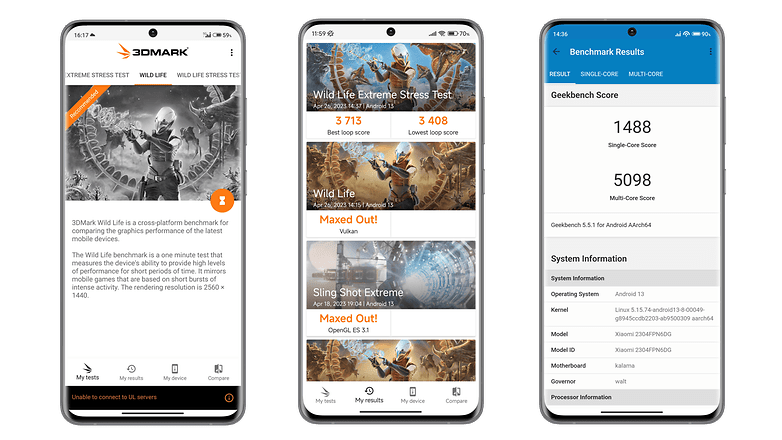
There is also some good news about the USB port. Xiaomi is switching to the USB 3.2 standard, which means data rates of up to 5 GBit/s. This is not only long overdue but also necessary because of the camera. More about that later.

Xiaomi 13 Ultra camera
It is rare that a camera system in a smartphone looked like it was designed on the drawing board—more or less what Sony introduced as a multi-camera collaboration system some time ago. That is the case in the Xiaomi 13 Ultra: The manufacturer relies on the 1-inch Sony IMX989, which we already know from the Xiaomi 12S Ultra, but this time with a variable aperture. In addition, the 1/2.51-inch IMX858, which impressed my colleague Camila Rinaldi in her review of the Honor Magic 5 Pro, was used three times.
What I liked:
- Fantastic 1-inch sensor with variable iris aperture.
- Three equally capable cameras for ultra-wide, 3x telephoto, and 5x telephoto.
- 8K video with all cameras, seamless zoom with 4K recording.
What I disliked:
- Front camera is only capable of recording Full HD video
Xiaomi has developed the camera of the 13 Ultra in close collaboration with Leica. The lens manufacturer helped with the optics and also with the image processing. You can basically choose between two Leica modes: Leica Authentic and Leica Vibrant. But how does that work in reality?

Main camera with variable aperture
Let's begin with the main camera: When it comes to image quality, the 1-inch IMX989 delivers flawlessly. However, anything else would have been a surprise after the performance of the Xiaomi 12S Ultra, which also completely convinced you in our camera blind test at the end of 2022.
The photos in daylight look great and impress with a great dynamic range and crisp sharpness without ever looking over-rendered. Even with strong contrasts, the pictures remain natural and free of HDR artifacts like ghost edges or flat blacks. This is really fun.
The variable aperture also helps here, reliably stopping the lens down to F4.0 in automatic mode to improve imaging performance and increase the depth of field. By the way, you do not have to worry about bokeh effects in portraits—Xiaomi calculates them better via software than it would be optically possible with this small lens.
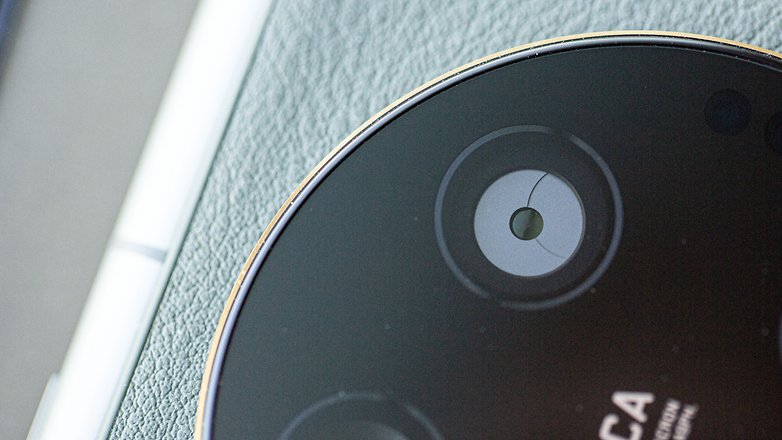
In lower light conditions, Xiaomi then turns up the heat, namely the aperture. At F1.9, a good four times more light reaches the sensor than with F4.0. With the 1-inch sensor and improved algorithms compared to the 12S Ultra, Xiaomi still conjures up impressive results even in very low light conditions that make even the major competitor from South Korea jealous.
Ultra-wide angle and two telephoto lenses: Three IMX858 sensors for one Hallelujah
Compared to the 12S Ultra, Xiaomi doubled the number of telephoto cameras on the 13 Ultra. The two lenses now offer 3x and 5x magnification. With 50 megapixels per sensor, you thus always have a "real resolution" of at least 12 megapixels as a basis for your photos when zooming in whole numbers up to 6x.
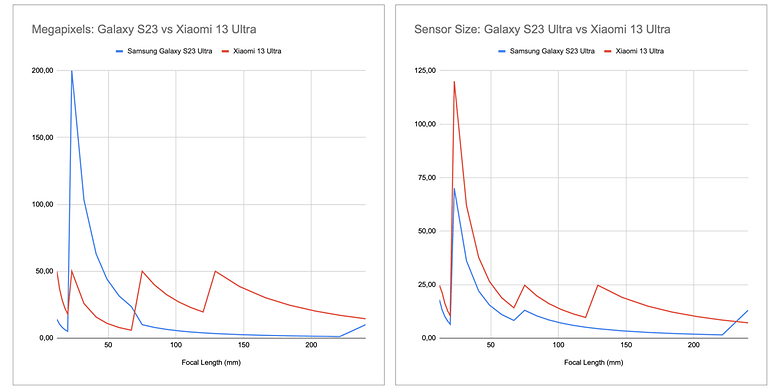
In practice, the flexible telescope system is fun. The installed Sony sensors are decent sized at 1/2.51 inch. During the day, both telephoto cameras deliver colorful and razor-sharp photos that almost perfectly match the results of the main camera in terms of coloring and style.
In low-light conditions, even the 3x lens still does an amazingly good job thanks to the fast F1.8 optics. Whether your subjects are illuminated by tungsten, twilight, or fluorescent lighting: The pictures still turn out very well. But clearly: The darker the scene, the bigger the difference to the main camera. No wonder, the 1-inch sensor offers about four to five times more surface than the IMX858—and also an image stabilizer.

The situation is quite similar with the 5x telephoto. In daylight, the 50-megapixel camera shoots razor-sharp, natural, and precisely exposed photos. The darker it gets, the more the aperture of F3.0 installed here becomes noticeable. Compared to F1.8, F3.0 means 3.5 times less light on the sensor and correspondingly poorer image quality.
Finally, the ultra-wide-angle camera again offers an aperture ratio of F1.8 and thus practically identical image quality to the 3x telephoto. What we like here is the extremely wide angle of view with a 12 mm equivalent focal length, which really deserves the predicate: "panorama suitable".
In low light conditions, the image quality is even a tad better than with the 3x telephoto. The ultra-wide angle is less sensitive to camera shake and thus allows longer shutter speeds—even the optical image stabilizer in the telephoto lenses can't compensate for that.
Xiaomi still has a whole stack of software tricks ready for its various cameras. Of course, the obligatory portrait mode with background blur is on board, which offers various focal lengths with different bokeh effects. In addition, there's a particularly fast sports mode as well as the option to take 14-bit RAW photos ("Ultra-RAW").
Video: 8K across all cameras
Last but not least, there is the video capability. The Xiaomi 13 Ultra can record completely unnecessary 8K resolution across all cameras. But, due to the densely staggered focal lengths and the excellently matched lenses, here's a 4K camera with a truly seamless and virtually lossless 10x zoom. The video quality is excellent and decreases in quality over the different focal lengths and different lighting conditions in a similar way as described above for photography.
In terms of codecs, there's a choice of H.264 or H.265 in 8-bit and 4:2:0 color subsampling—and for demanding users, 10-bit LOG as well as a mode that even lets you set up a multi-camera setup as a director. However, 8-bit video should suffice for at least 99% of the purposes. With the great picture quality, you really have all options for great videos.

The bottom line is that the Xiaomi 13 Ultra thus offers a camera system that is really like a one-stop shop when it comes to hardware and software, and it is all-around fun. Yes, Samsung remains the zoom leader on paper with the S23 Ultra and 10x optical zoom, but Xiaomi offers a more coherent overall concept and all-around better image quality with a smaller gap in the overall focal length range.
Xiaomi 13 Ultra camera kit
I would like to leave you with a couple of paragraphs concerning the camera kit, of which I cannot say for certain at this point whether it will be a "China only" product or whether it will also be available on a global scale. There is another green case, which, unlike the black case that comes with the kit, allows you to attach a standardized and screw-on 67 mm filter. Actually, this is a moot point, since this functionality could have been offered in the standard case.
Furthermore, there is a push-on and lockable handle. It connects to the Xiaomi 13 Ultra via Bluetooth by permanently pressing the two-stage shutter button. Thus, you can also use the handle as a remote control. When mounted to the smartphone, it facilitates photography with a better grip, offering a practical strap, zoom controls, and a shutter release that focuses when pressed lightly to capture a photo when pressed.
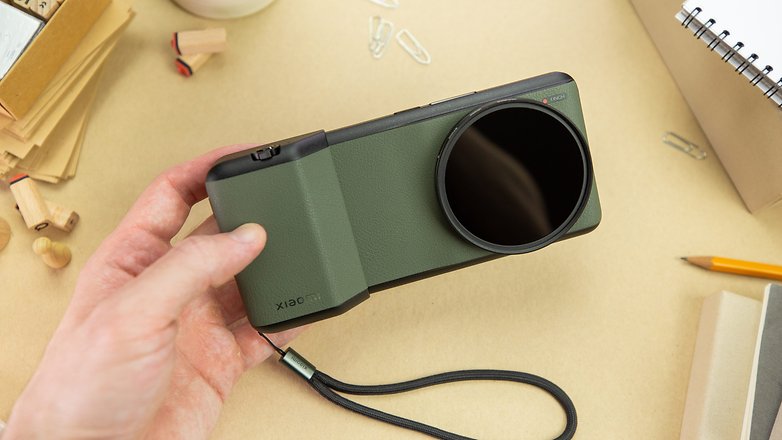
Xiaomi 13 Ultra battery
The Xiaomi 13 Ultra offers a 5000 mAh battery and is thus initially similar to the competition. Charging is also quite fast with 90 W via cable and 50 W wirelessly. We certainly did not expect any less. Of course, you will also get through the day with the Xiaomi 13 Ultra and a full battery charge.
What I liked:
- 5,000 mAh capacity battery.
- The battery charges to full in less than 50 minutes.
- Quick charging at 90 W.
- Wireless charging at 50 W.
What I disliked:
- A long battery life is probably not the Xiaomi 13 Ultra's strong point.
- Probably doesn't support fast PowerDelivery via USB 3.2 despite PD 3.0/QC 4.0.
The Xiaomi 13 Ultra fills up its 5,000 mAh capacity battery at up to 90 W in less than 50 minutes using a specially included Xiaomi charger. After just 5 minutes, it already charges the battery to 26%, and hits 70% after 20 minutes. Wireless charging works at 50 W, and reverse wireless charging is supported as well at 10 W.
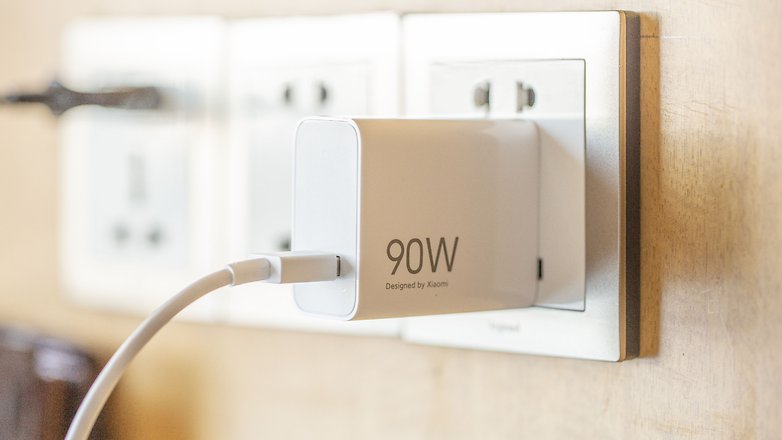
- Related: Is quick charging a gimmick or is it a must-have?
Xiaomi mentioned Power Delivery 3.0 and Quick Charge 4.0 compatibility in its specifications.
The "PC Mark Work 3.0" benchmark test, unfortunately, confirmed our initial feeling of the slightly poor battery runtime. With a display brightness of 200 nits and flight mode turned on, the current Xiaomi flagship managed just 10 hours and 46 minutes to leave us with 20% of battery capacity. We will run the test a few more times over time. If there are any glaring differences that appear, we would update this review.
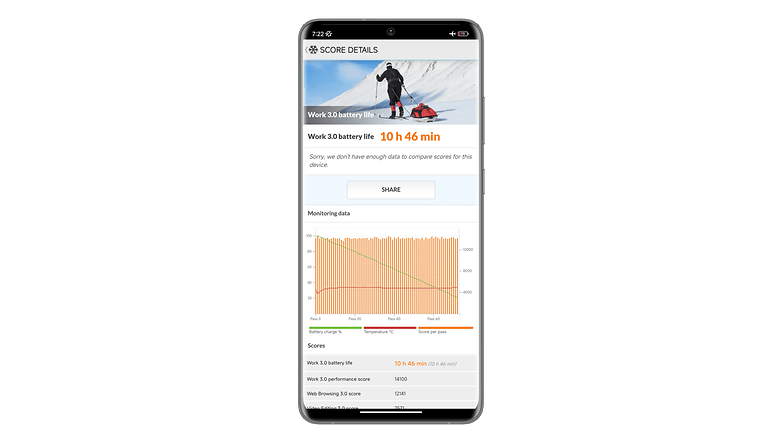
Xiaomi 13 Ultra technical specifications
| Technical specifications | |
|---|---|
| Product | |
| Image |

|
| MSRP | Unknown |
| Display | 6.73" AMOLED (Corning Victus) |
| 3,200 x 1,440 pixels | |
| 120 Hz refresh rate (LTPO) | |
| SoC | Qualcomm Snapdragon 8 Gen 2 |
| Working memory | 16 GB LPDDR5X RAM |
| Memory | 512 GB UFS 4.0 |
| Expandable memory | - |
| OS | Android 13 / MIUI14 |
| Camera | Main camera (IMX989): 50 MP, aperture f/1.9 or f/4.0), OIS, 23/46 mm Ultra-wide angle/macro (IMX858): 50 MP, f/1.8 aperture, 122° FOV, 12 mm Telephoto (IMX858): 50 MP, f/1.8 aperture, OIS, 3x optical zoom, 75 mm Periscope (IMX858): 50 MP, f/3.0 aperture, OIS, 5x optical zoom, 10x hybrid, 120/240 mm optional 67 mm filter ring mount, handgrip with zoom and 2-stop shutter release |
| Selfie camera | 32 MP, f/2.2 aperture, FOV |
| Battery | 5,000 mAh 90 W fast charging, charger included (PD 3.0/QC 4.0) up to 50 W wireless charging 10 W reverse wireless charging |
| Connectivity | 5G / LTE / Wi-Fi 6E (Wi-Fi 7 ready) /Wi-Fi Direct / Bluetooth 5.3 / NFC |
| IP certification | IP68 |
| Colors | Black, White, Olive Green |
| Dimensions and weight | 163.18 x 74.64 x 9.06 mm, 227 g |
Final verdict
The Xiaomi 13 Ultra is touted as the ultimate camera smartphone—how good is it really?
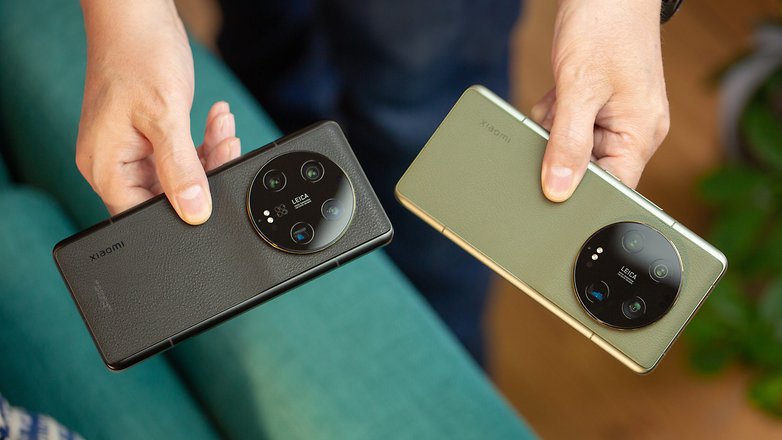
The Xiaomi 13 Ultra is—how could it be otherwise—of course, a great smartphone. Although you might not agree with our flagship camera blind test!
It currently has the most powerful processor available for Android smartphones. The battery charges sufficiently fast enough, and the high-resolution display is simply wonderful. The eye-catching design might be a matter of taste, but the materials are high-quality and the build is excellent. The software is not quite on par with the best rivals yet, but Xiaomi has quickly caught up in terms of its update policy.
Then there is the camera, which is much more than just a few sensors nailed together without any concern. The camera follows a strict concept and is more sophisticated than in almost any other Android smartphone. Currently, only the Honor Magic 5 Pro and the iPhone series can keep up, but they both offer less variety—and will also have to take a back seat in terms of picture quality based on our hands-on experience.
Thus, at the end of our detailed review of the Xiaomi 13 Ultra, we are left with the question of the final price. At €1,499 a pop, it is very steep by the company's own standards.
However, is the price for a flagship camera phone—which the Xiaomi 13 Ultra is one, make no mistake about it—really that expensive? The Samsung counterpart costs $1,199 a pop and offers the S Pen stylus as an added incentive. Other Chinese phone manufacturers such as Huawei have since shunned away from the low-end and mid-range scene. Is it time for Xiaomi to rethink their strategy?
I will leave you with this question, or we can discuss it further in the comments!



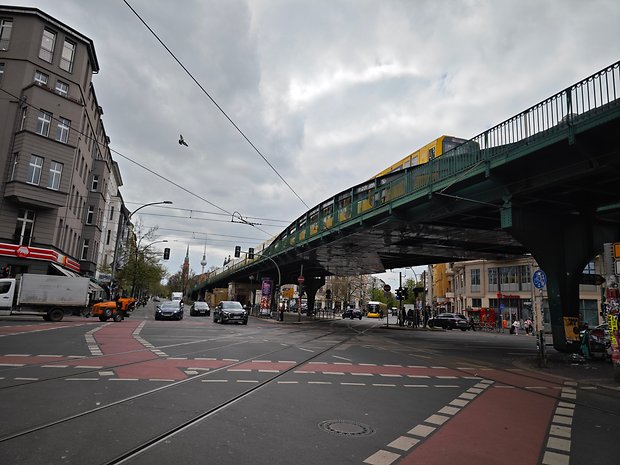

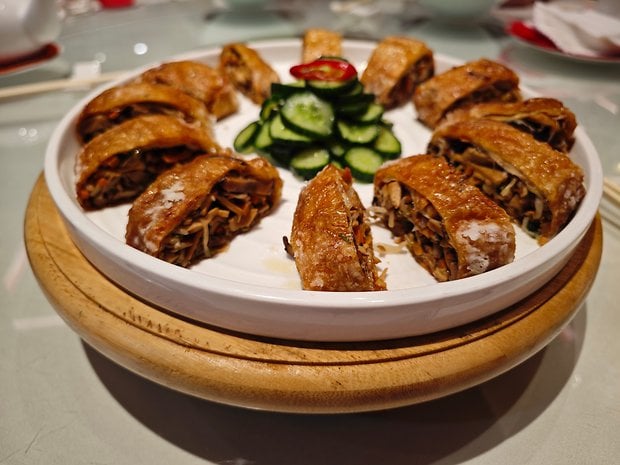





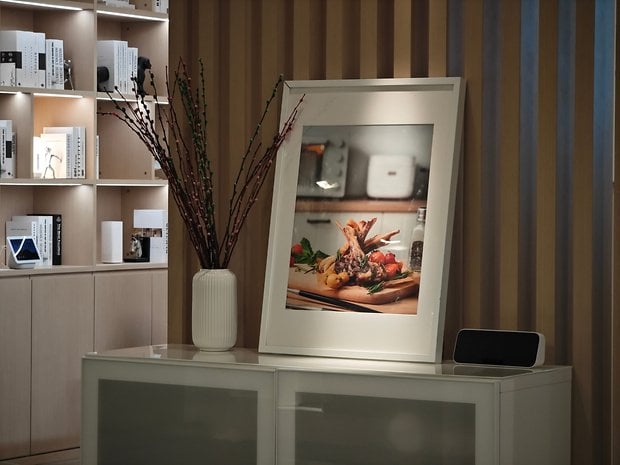
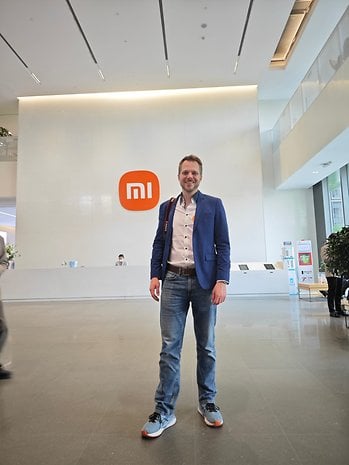
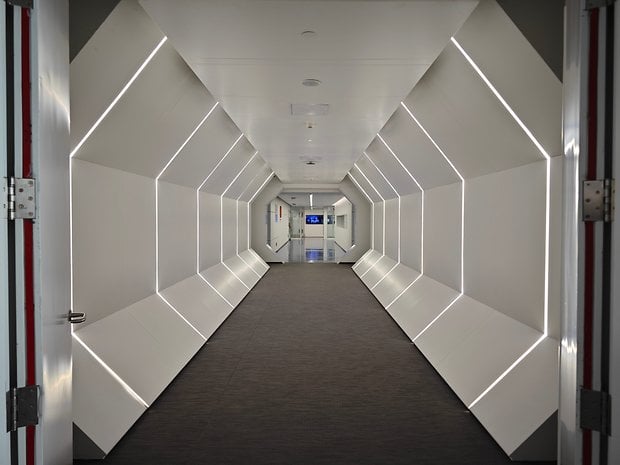
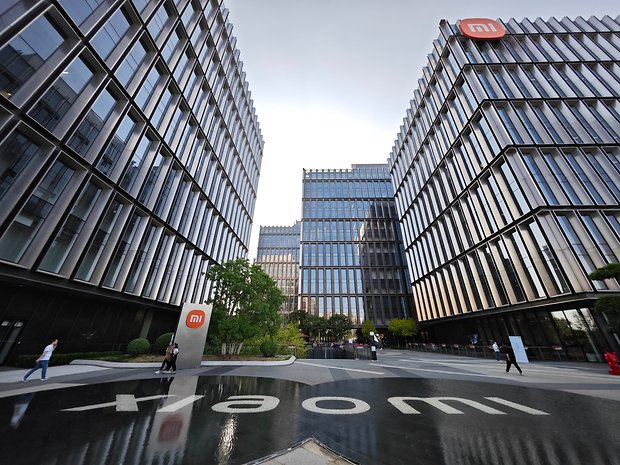
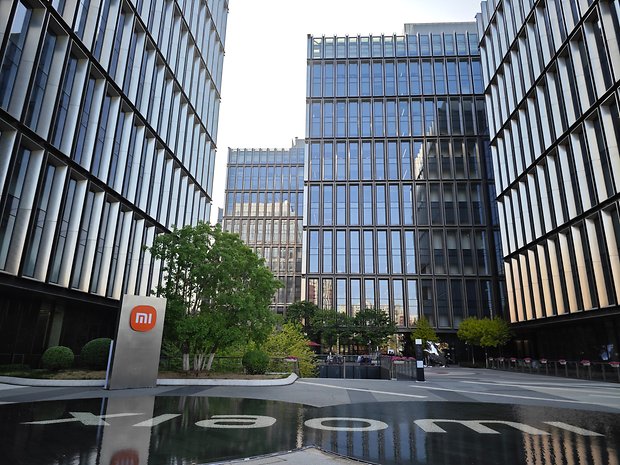

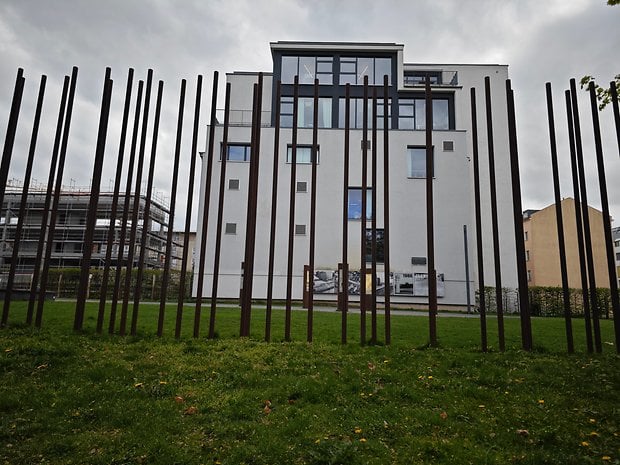



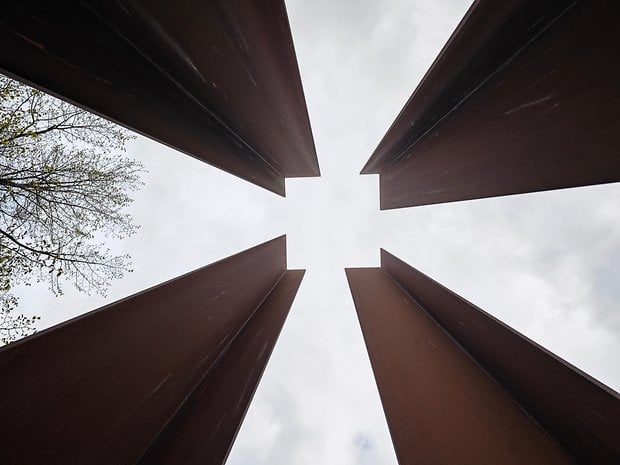















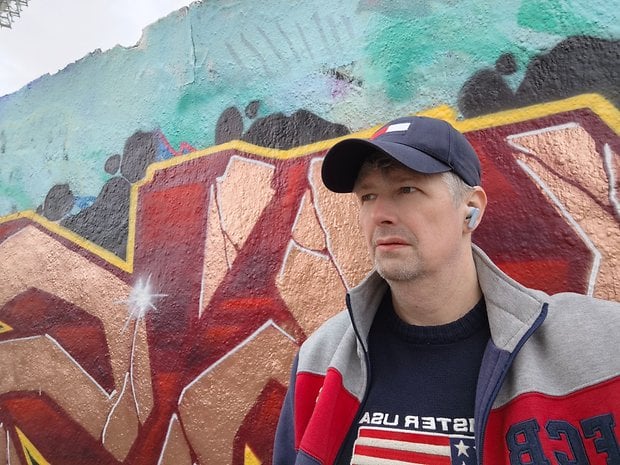


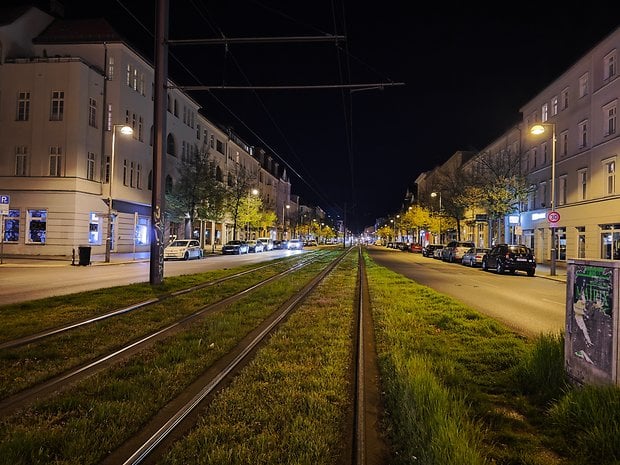



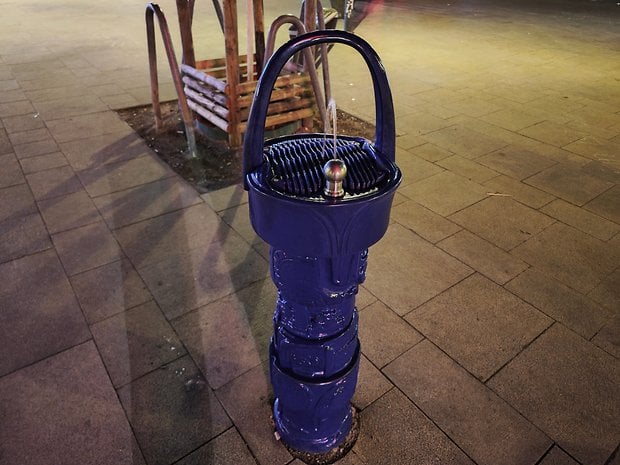


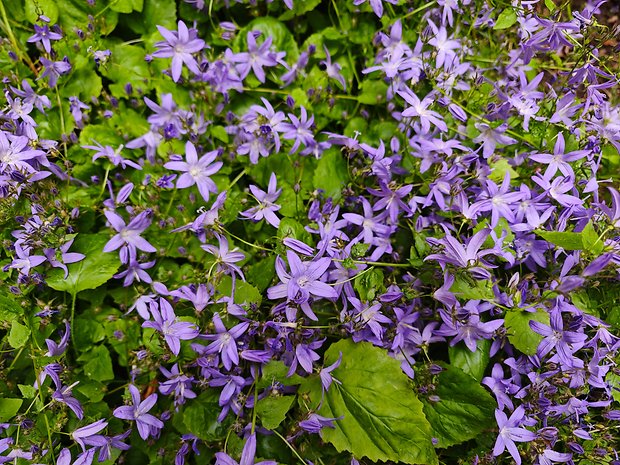










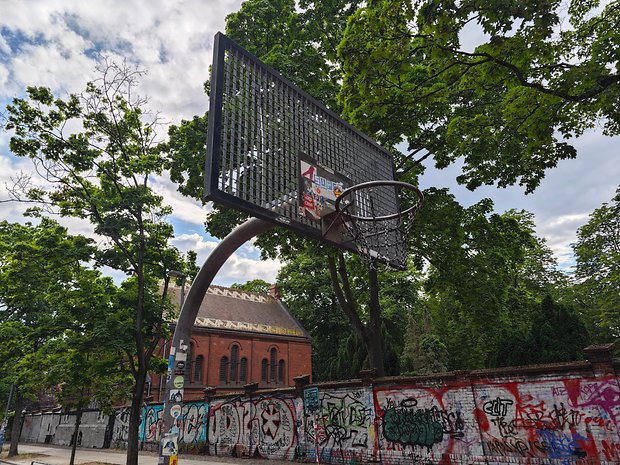














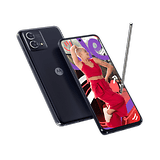

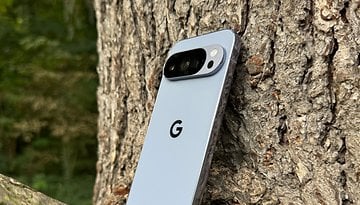












such a pity ! until xiaomi provides assurance that they are serious about their after sale service, past experience has not given me the courage to buy another xiao mi phone. All these frills and improvements only makes me sigh at their lack of consideration of the end customer's total experience !!! don't touch a xiao mi phone or will regret it unless prepared to buy and throw away !!!
Why, why is so HARD to include full res photos man???? like 1 pic is 2 megabytes, are your server so weak that cant handle 10 megabytes???
Nice to see they got rid of the silly GLASS back that is on 99% of phones today.